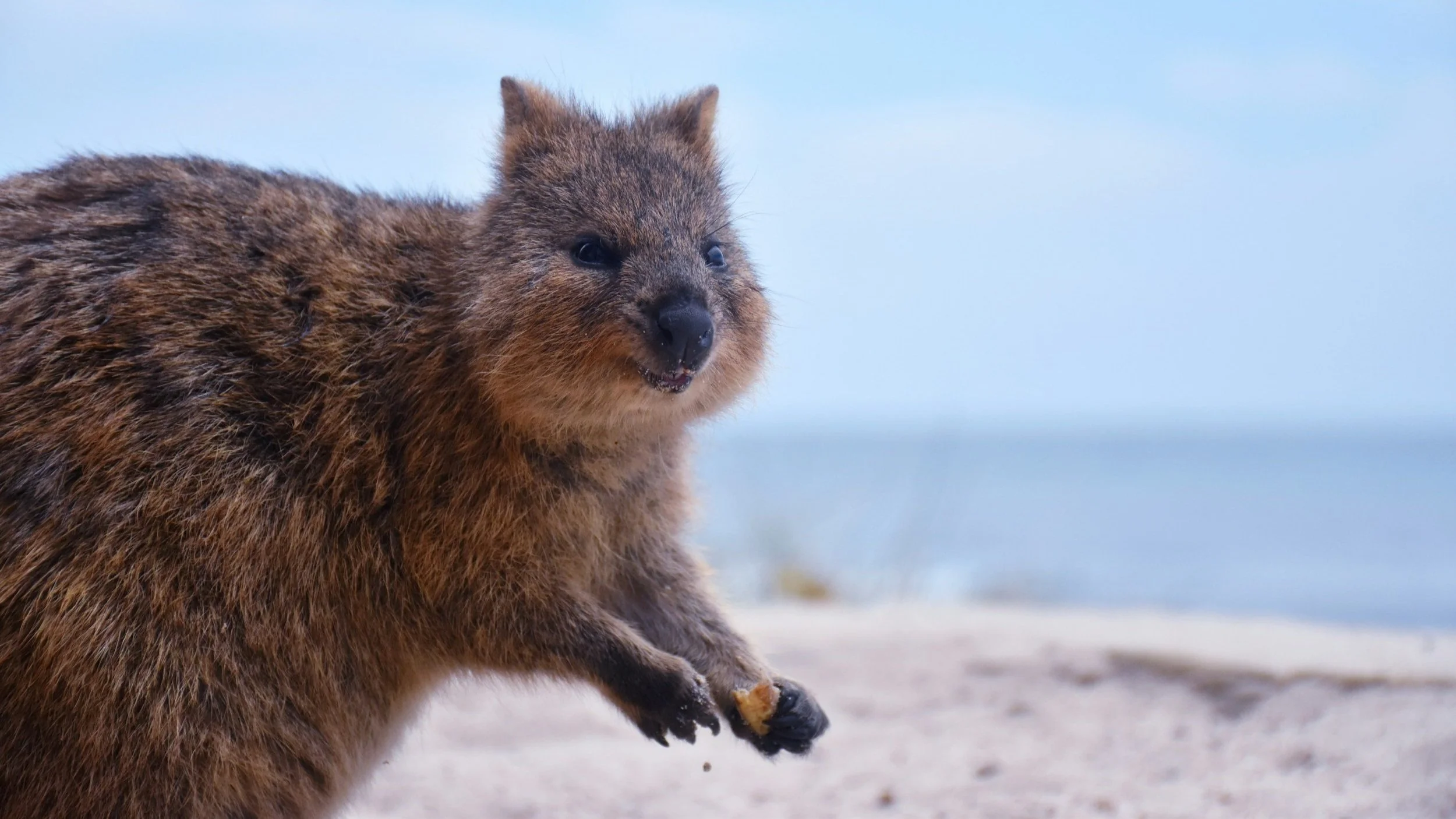Our Favorite Australian Wildlife Destinations
Australia's diverse landscapes and unique ecosystems make it a paradise for wildlife enthusiasts. From iconic marsupials to rare birds and marine life, this itinerary will take you on an incredible journey through some of the country's most spectacular wildlife destinations. Get ready to explore six regions with a distinct blend of natural wonders and animal encounters.
Australia is home to some of the world’s most iconic animals.
Kangaroo Island
Our wildlife adventure begins on Kangaroo Island, often described as a "zoo without walls". This sanctuary off the coast of South Australia is home to an abundance of native species living freely in their natural habitats.
Highlights:
Seal Bay Conservation Park: Wander among a colony of Australian sea lions with a guided tour.
Flinders Chase National Park: Visit Admirals Arch to see thousands of long-nosed fur seals year-round.
Kangaroo Island Wildlife Park: Get up close with koalas, feed kangaroos, and encounter various native species.
For a truly immersive experience, consider booking a private tour at Kangaroo Island Wildlife Park. You'll be able to hold snakes, meet quokkas, and even encounter orphaned joeys (seasonal). Join a nocturnal adventure tour at Hanson Bay Wildlife Sanctuary as the sun sets. This 90-minute guided walk offers the chance to spot koalas, tammar wallabies, kangaroos, echidnas, bats, and possums in their natural nighttime environment.
The Grampians
Next, we head to the Grampians in Victoria, a region known for its dramatic sandstone mountains, diverse flora, and abundant wildlife.
What to see:
Look for kangaroos and wallabies grazing in the grasslands.
Spot emus wandering through the bush.
Keep an eye out for colorful native birds like crimson rosellas and gang-gang cockatoos.
Consider taking a guided wildlife tour to increase your chances of seeing some of the more elusive species that call the Grampians home.
Emus are the second largest bird in the world, after the ostrich.
Maria Island
Our journey continues to Maria Island, off Tasmania's east coast. This car-free national park is a haven for wildlife, and introduced species have been removed to protect native fauna.
Key experiences:
Observe Tasmanian devils in a disease-free environment.
Watch for wombats grazing on the island's grassy plains.
Look for rare Cape Barren geese and other native bird species.
A guided multi-day walk can provide in-depth insights into the island's unique ecosystem and inhabitants.
Wombat encounters are very common on Maria Island.
Rottnest Island
Our next stop is Rottnest Island, just off the coast of Perth in Western Australia. This protected Class A Reserve is a puzzle of six unique ecosystems, each home to thriving animal, bird, and sea life.
Must-see wildlife:
Quokkas: Known as the "happiest animal on Earth," these friendly marsupials are the island's most famous residents. About 10,000 quokkas call Rottnest home, and they're often easily spotted around the island.
Marine life: Head to Cathedral Rocks to see long-nosed fur seals and Australian sea lions. You might also spot bottlenose dolphins frolicking in the waves.
Birds: Look for ospreys, wedge-tailed shearwaters, and the rare golden whistler.
For a unique experience, take an evening walk to listen to the echolocation calls of white-striped free-tailed bats, one of the few bat species whose calls are audible to humans.
Be sure to try for a Quokka selfie when you visit Rottnest Island.
Phillip Island
Our wildlife tour continues on Phillip Island, famous for its nightly penguin parade and diverse ecosystem.
Key attractions:
Watch Little Penguins waddle ashore at sunset.
Visit the Koala Conservation Centre to see these iconic marsupials up close.
Take a cruise to see Australian fur seals at Seal Rocks.
Consider timing your visit between May and October for a chance to spot migrating humpback and southern right whales from the island's coastal lookouts.
Flinders Ranges
Our final destination is the Flinders Ranges in South Australia, where rugged mountains and deep gorges provide habitat for many native species.
Wildlife to look for:
Red kangaroos and euros (wallaroos) in the open plains.
Yellow-footed rock wallabies in rocky outcrops.
Emus striding across the landscape.
Wedge-tailed eagles soaring overhead.
A 4WD tour can take you deep into the ranges, increasing your chances of spotting some of the more elusive species that call this ancient landscape home.
If you visit Flinders Ranges during spring months keep your eyes peels for emu chicks.
Tips for Responsible Wildlife Viewing
As we explore these incredible destinations, remember we are visitors to these animals' homes. Here are some guidelines to ensure your wildlife encounters are both memorable and responsible:
Keep your distance: While it's tempting to get close for that perfect photo, maintaining a respectful distance is crucial for the animals' well-being and your safety.
No feeding: Human food can harm wildlife and alter their natural behaviors. Instead, observe animals in their natural state.
Stay on designated paths: This helps protect fragile ecosystems and reduces disturbance to wildlife.
Use binoculars: They allow you to observe animals up close without invading their space.
Be patient and quiet: Wildlife viewing often requires patience. Minimize noise to avoid startling animals.
Choose ethical tour operators: Look for companies focused on animal welfare and conservation.
Leave no trace: Take only photographs and memories, leaving each place as you found it.
By following these guidelines, we can help to ensure that these incredible wildlife experiences will be available for generations.
Each destination promises an unforgettable journey through some of the country's most spectacular wild places. As you embark on this adventure, remember that every animal sighting is a privilege.





